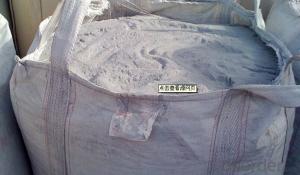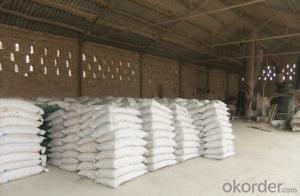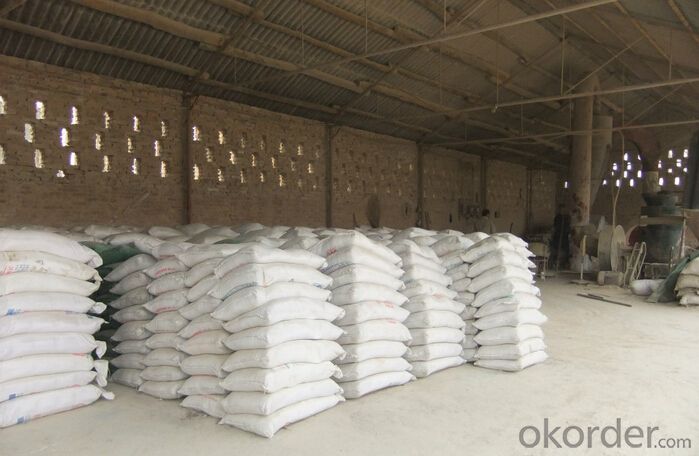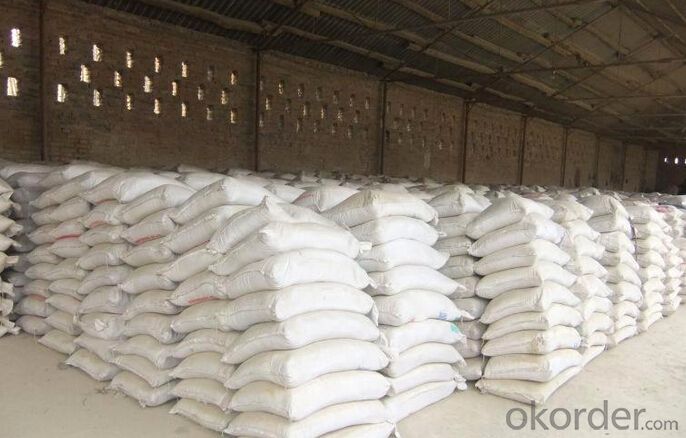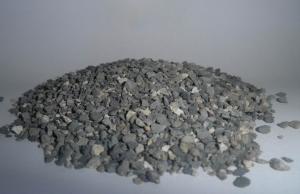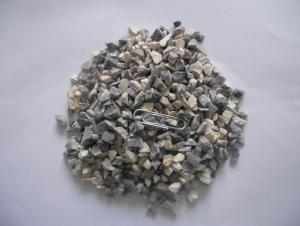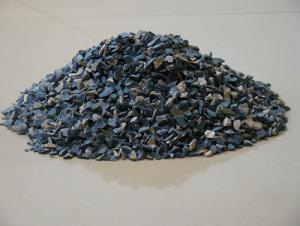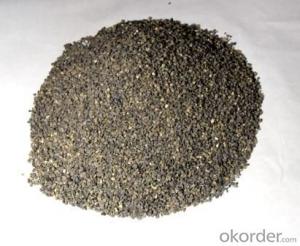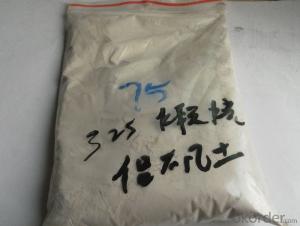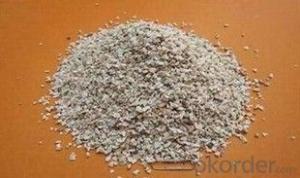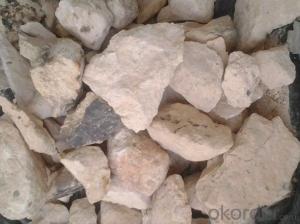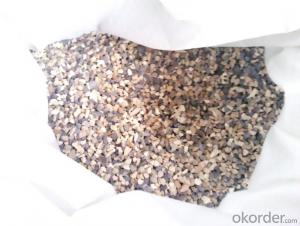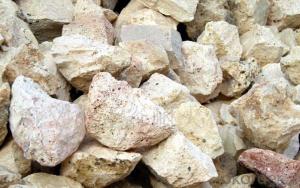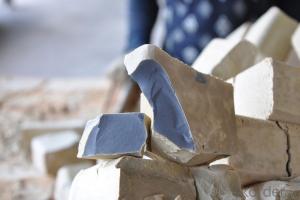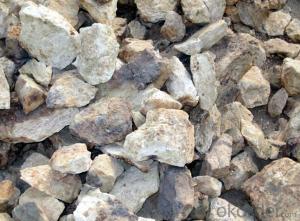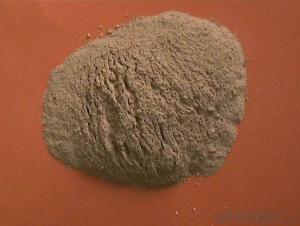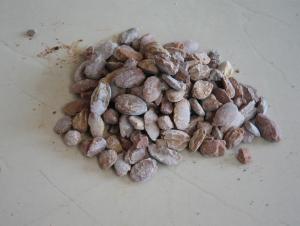Raw Materials for Refractory:Factory Direct Sale Bauxite Popular in France by CNBM China
- Loading Port:
- Tianjin
- Payment Terms:
- TT or LC
- Min Order Qty:
- 20000 m.t.
- Supply Capability:
- 10000000 m.t./month
OKorder Service Pledge
OKorder Financial Service
You Might Also Like
1.Structure of Calcined Bauxite Description
Factory Direct Sale Refractory Popular in France Bauxite of CNBM in China
Bauxite (aluminous soil; Bauxite) is also called the alumina or bauxite, main ingredients are alumina, hydrated alumina containing impurities, is an earthy mineral. White or gray, brown and yellow or light red by iron. From 4 to 3.9 g/cm3 density, hardness, 1 ~ 3 is not transparent, very brittle. Very difficult to melt. Insoluble in water, soluble in sulfuric acid, sodium hydroxide solution. Mainly used for aluminium, refractory material.
2.Main Features of the Calcined Bauxite
Factory Direct Sale Refractory Popular in France Bauxite of CNBM in China
Calcined bauxite is one of the principal ore of aluminum. Calcined bauxite contains hydrous aluminum oxides and aluminum
hydroxides, formed through the laterization of aluminous rocks in tropical and subtropical areas .Calcined bauxite is obtained by calcining (heating)superior grade bauxite at high temperature (from 85OC to 1600C) .This removes moisture there. By increasing the alumina content,compared to an alumina content of about 57%to 58% in raw bauxite, calcined bauxite has an alumina content of 84%to88%.The heating is carried out in rotary kilns.
3. Calcined Bauxite Images
Factory Direct Sale Refractory Popular in France Bauxite of CNBM in China

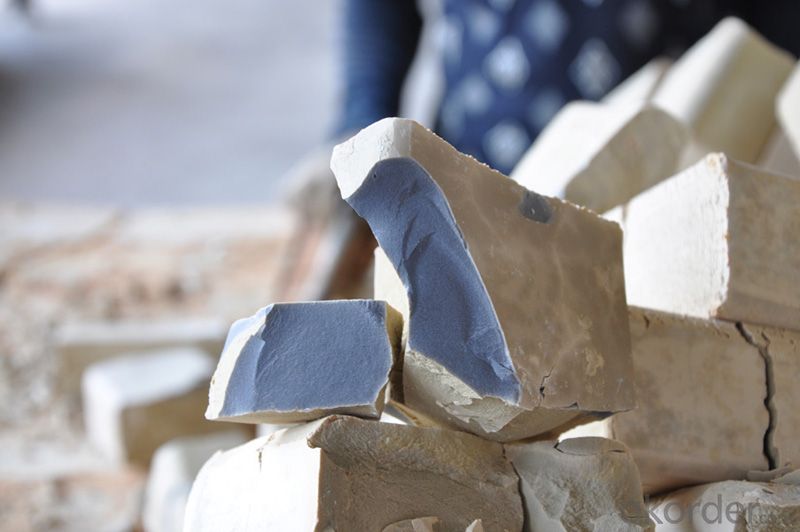
4. Calcined Bauxite Specification
Factory Direct Sale Refractory Popular in France Bauxite of CNBM in China
ROTARY KILN BAUXITE
Al2O3 | Fe2O3 | SiO2 | TiO2 | K2O+Na2O | CaO+MgO | B.D (g/ccm) |
min | max | max | max | max | max | min |
88% | 1.8% | 6.5% | 4% | 0.25% | 0.5% | 3.25 |
87% | 2.0% | 7.0% | 4% | 0.25% | 0.5% | 3.15 |
86% | 2.0% | 7.0% | 4% | 0.25% | 0.5% | 3.15/3.10 |
85-80% | 2.0% | 10.0% | 4% | 0.30% | 0.5% | 3.10 |
ROUND KILN BAUXITE
Al2O3 | Fe2O3 | SiO2 | TiO2 | K2O+Na2O | CaO+MgO | B.D (g/ccm) |
min | max | max | max | max | max | min |
88% | 2.0% | 6.5% | 4% | 0.25% | 0.5% | 3.30 |
87% | 2.0% | 6.5% | 4% | 0.25% | 0.5% | 3.25 |
86% | 2.0% | 7.0% | 4% | 0.25% | 0.5% | 3.20 |
85% | 2.5% | 8.0% | 4% | 0.25% | 0.5% | 3.10/3.15 |
Advantage:
Factory Direct Sale Refractory Popular in France Bauxite of CNBM in China
1.High quality and competitive price.
2.Timely delivery.
3.If any item you like. Please contact us.
Your sincere inquiries are typically answered within 24 hours.
- Q: Who knows about roof fireproofing materials?
- Roof thermal insulation materials are various which generally can be divided into two categories, namely inorganic and organic materials: Inorganic materials are expanded perlite, aerated concrete, rock wool, glass wool, etc. Organic materials are styrofoam, polyurethane?foaming?plastic and so on. A. common roof thermal insulation materials 1. the expanding polystyrene board (EPS) has good thermal insulation performance, and cheap price but poor intensity with heat conductivity coefficient of 0.038-0.041. 2. extruded polystyrene board (XPS) has better thermal insulation performance and high intensity but an expensive price with heat conductivity coefficient of 0.028-0.03. It is moisture resistant but needs treatments on surface in construction. 3. rock wool board, with heat conductivity coefficient of 0.041-0.045, is fireproofing, fire?retardant. It has a good hygroscopicity performance but is poor in thermal insulation. 4. gelatine powder polyphenyl granule heat insulating slurry, with heat conductivity coefficient of 0.057- 0.06, has a good flame resistance performance, but the results of recycling and thermal insulation are unsatisfactory. It has high construction requirements. 5. polyurethane foaming material, with heat conductivity coefficient of 0.025-0.028, has good waterproofness and thermal insulation performance, as well as high intensity, but it is expensive. 6. perlite and other slurry, with heat conductivity coefficient of 0.07-0.09, have good flameproofness and water-absorbing ability but are poor in thermal insulation and thermostability.
- Q: What requirements should refractory materials meet?
- The operating temperature of forging furnace is above 1000, which can ensure the normal operation of the furnace, prolong the life of the furnace and save energy. General requirements for refractories are as follows. 1 They should deform at a sufficient temperature without melting. 2, They should have necessary structural strength without softening and deforming. The volume should be stable at high temperature without expansion, contraction or cracking. 4, They can resist erosion of molten metal, slag, gas and other chemicals.
- Q: How many kinds of A-level fireproof and thermal insulation materials are there?
- Inorganic insulation materials basically can achieve the goal, such as glass wool, rock wool, and foam glass. The phenolic foam in the organic foam material is special. Phenolic foam is not only good at insulation, but also good at compounding with steel and other materials to achieve A-level performance, and the A-level insulation materials are: Rock(ore) wool, foam glass and inorganic thermal insulation mortar.
- Q: How can refractory materials be divided?
- There are many criteria for the classification of refractories.Just referring to a book about refractory.
- Q: What is unshaped refractory?
- Unshaped refractory is a mixture made of aggregate and powder, binder or other admixture. It can be used directly or after proper liquid mixing. The material is a new type of refractory material after calcination, the refractoriness of not less than 1580 DEG C unshaped refractory materials by various varieties, production method and use method thereof can be divided into concrete, pouring material, plastic, ramming material, gunning, casting material, coating material, dry ramming material fire, mud, all kinds of repairing materials (with asphalt surface patch charge, Ma Dingsha) also do not belong to the shape of the column.
- Q: What is the concept of lightweight refractory material?
- Lightweight refractory material has high porosity, mechanical strength and erosion resistance. Compared with normal refractory bricks, it is a kind of refractory material with large volume shrinkage in high temperature, low thermal conductivity and small bulk density. It is used as thermal insulation material in industrial furnace and other thermal equipments. It has poor wear resistancel.
- Q: Is there anyone who can explain how to grade the level of fire insulation board?
- 1, Combustion performance of building material is divided into the following several class according to China's national standard GB8624-97 Class a: Non combustible building materials: Non-conbustible material. Class B1: Refractory building materials: Flame retardant materials have good flame retardant effect. It hardly catch on fire in the case of open flame and high temperature, do not spread fire quickly, and when the fire source is removed, fire will be stopped immediately. Class B2: Combustible building materials: Combustible materials have certain flame retardant effect. In case of fire or under high temperature, it will immediately burst into flames, easily leading to spread of fire , such as poles, wooden frame, timber, and wood stairs. Class B3: Combustible building materials: Without any flame retardant effect, will be burnt easily, resulting in high risk of fire. I Hope my answer will help you.
- Q: What kind of materials are needed to make refractory bricks?
- The components of the raw materials of refractory bricks. There are many types of raw materials, mainly divided into six categories: Earth, stone, sand, ore, powder and others. No.1, earth: bauxite, kaolin, clay, kieselguhr. No.2 Two: stone: fluorite, kyanite, andalusite, forsterite, vermiculite, mullite, pyrophyllite, chlorite and dolomite, sillimanite and spinel, silica. No.3: sand: ceramic sand, zircon sand, quartz sand, magnesia. No.4, ore: chrome ore. No.5, powder: Metal powder, silicon powder, metal powder. No.6, others: Asphalt and graphite, phenolic resin, perlite, cenosphere, sialon corundum silicon sulfate, silicon carbide, water glass, silica sol, boron carbide, calcium aluminate cement, nitride materials, shale ceramsite, alumina, aluminum sol, zirconia.
- Q: Is it normal for caable fire resistant material to catch on fire?
- Abnormal, preventive measures: 1 take fire preventive measures. Measures taken for fire retardant measures of cable: (1) seal closely with fire resistant materials holes ran by cables through walls, shafts to prevent the cable fire, high temperature gas diffusion and spread when cables are on fire. (2) to wrap the cable with the insulation refractory material, when the cable is surrounded with fire, warpped cable is insulated by the insulation material from fire, so it will not be burned. If the cable itself is on fire, fire will be extinguished thankes to lack of oxygen in warpped cable, to avoid the fire to spread out. 2 to strengthen the cable circuit switch and regular protective check and maintenance, to ensure that the action is reliable. 3 to strengthen the cable operation and monitoring, to avoid the overload of the cable operation. . 4 regularly clean dust on the cable, to prevent cable from catching on fire due to the accumulation of dust. 5 to ensure the construction quality, the quality the cable must be strictly in line with the requirements and standards. 6 cable laying should maintain enough distance form the heat pipe, control cable is no longer than 0.5 meters; power cable is no longer than l meters. Control cable and power cable should be divided into slots, be layered and seperated instead of being overlapped . For the parts that do not meet the requirements, measures must be taken to insulate heat and fire. 7 regularly teat cable , abnormal problem should be handled in a timely manner. 8 install fire alarm so that fire will be discovered on time, and cables will not catch on fire. 9 the cable trench should be kept dry to prevent the cable from being affected with damp, or leading to declined insulating function and short circuit.
- Q: What needs to be paid attention to in the construction of high- temperature refractory mortar?
- In the construction of high-temperature refractory mortar, the following matters should be noted: 1. Take out the organic fire blocking material and knead it into tha shape of a ball. If the temperature is too low, the blocking material along with the package can be put into 40-70℃ warm water and heated before any other operation. 2. During the use of high-temperature daub masonry stove, the minimum mortar joint should be 0.5mm and general mortar joint should be 3-5mm, which can solve the processing and fine grinding of refractory brick on the brick grinder. Besides, it is conducive to the health of workers, and can reduce the masonry effort, ensure the quality and speed up the construction progress. 3. When making urgent repair on the stove, if the joint is much too large, 2-3mm refractory pieces can be appropriately added into the high- temperature refractory mortar, and stirred to fill the joint so as to shorten the repair time and ensure normal production. 4. High- temperature refractory mortar can be painted inside various furnace body, and it should be guaranteed that the surface of the furnace body has no dust or debris before painting. The holes should be cleaned up before plugging. Lay, embed, and fill the blocking material into the gap of holes evenly. For larger holes, flame screen can be used as the framework to increase strength.
Send your message to us
Raw Materials for Refractory:Factory Direct Sale Bauxite Popular in France by CNBM China
- Loading Port:
- Tianjin
- Payment Terms:
- TT or LC
- Min Order Qty:
- 20000 m.t.
- Supply Capability:
- 10000000 m.t./month
OKorder Service Pledge
OKorder Financial Service
Similar products
Hot products
Hot Searches
Related keywords
